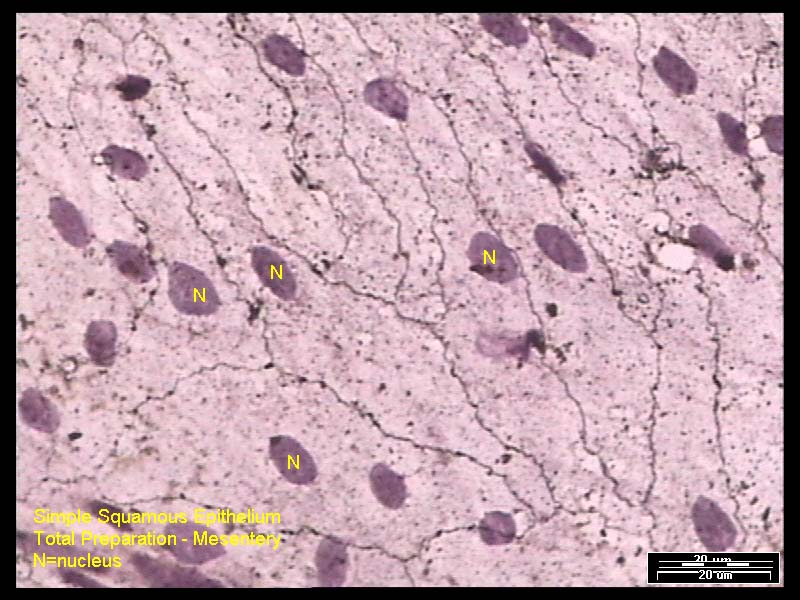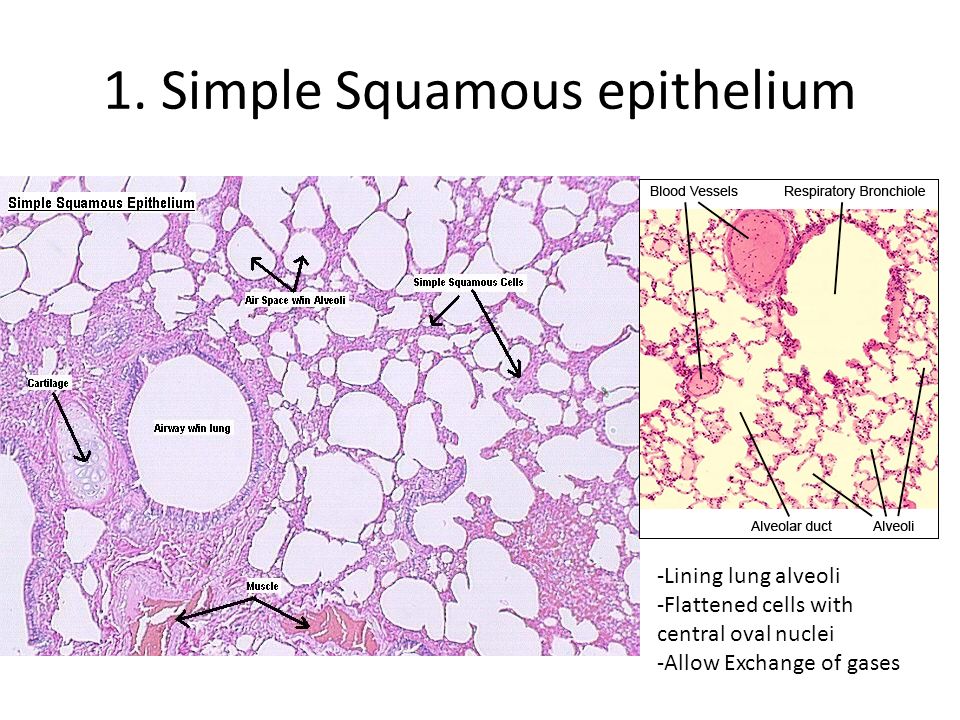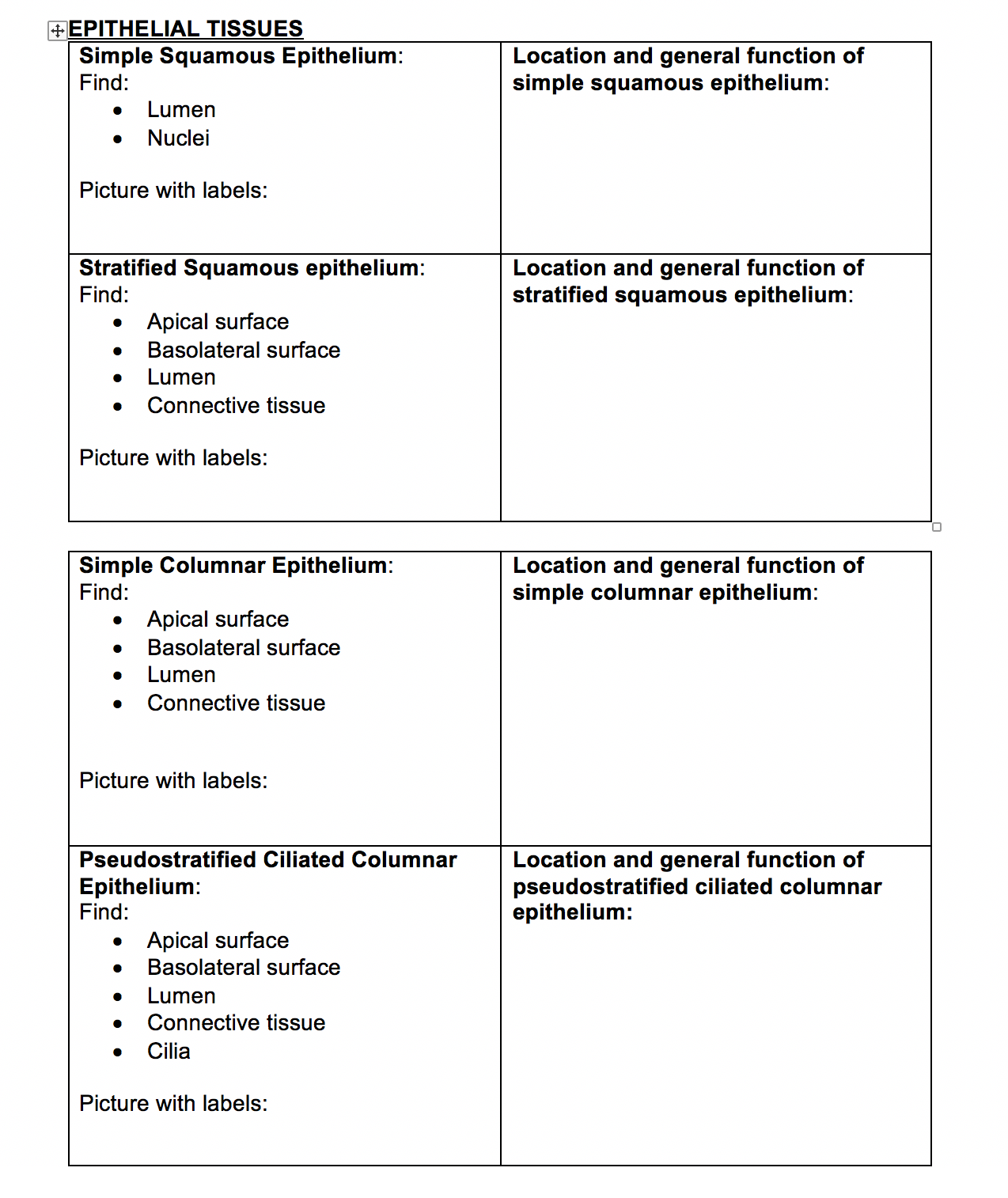Real Tips About Where To Find Simple Squamous Epithelium Flashcards For High Frequency Words

Simple squamous epithelia are found lining the cavities of the body including the pericardial, pleural, and peritoneal cavities, or in areas where passive diffusion occurs, such as glomeruli in the kidney and alveoli in the respiratory tract.
Where to find simple squamous epithelium. Skin, capillary walls, glomeruli, pericardial lining, pleural lining, peritoneal cavity lining, and alveolar lining. Epithelial cells can also be columnar or cuboidal. Simple squamous epithelium is found in places requiring efficient diffusion of substances across a thin membrane and thus form the endothelia of capillaries in the bloodstream, alveoli in the lungs, and some tubules in the kidneys.
Explain the structure and function of epithelial tissue distinguish between tight junctions, anchoring junctions, and gap junctions distinguish between simple epithelia and stratified epithelia, as well as between squamous, cuboidal, and columnar epithelia Regardless of its location and function, all epithelial tissue shares important structural features. You have a single layer of cells attached to a membrane of connective tissue, called the basement membrane.
The four major classes of simple epithelium are: Epithelium is one of only 4 types of human body tissues. And so we tend to find simple squamous epithelial tissue in areas of the body where liquids need to be able to flow smoothly.
The basic structure of simple epithelial tissue, is, well, simple. Squamous cells are narrow and have broad,. Like for example, simple squamous epithelial tissue is found lining all of the hollow organs of the cardiovascular system such as the capillaries and the larger blood vessels and the heart as well.
Simple squamous epithelium, because of the thinness of the cell, is present where rapid passage of chemical compounds is observed. Simple squamous is present in the alveoli, kidney glomeruli, lining of heart, blood vessels, lymphatic vessels (endothelium and serosae mesothelium simple cuboidal epithelium It also lines the glomeruli in the kidney and the pulmonary alveoli where passive diffusion occurs.
Simple squamous epithelium is a type of tissue found in the alveoli of the lungs and interior walls of blood vessels and lymphatic vessels. In the parietal part of the peritoneum, you will find the simple squamous lining under the light microscope. Like all types, it is formed by cells within an extracellular matrix (ecm).
Squamous cell nuclei tend to be flat, horizontal, and elliptical, mirroring the form of the cell. Squamous cell nuclei tend to be flat, horizontal, and elliptical, mirroring the form of the cell. Of particular note, epithelial tissue that lines vessels in the lymphatic and cardiovascular systems is called endothelium whereas epithelial tissue that forms the serous membranes lining the true cavities is called mesothelium.
The basal surface is the bottom side of the cells, or the side that's attached to the. Simple epithelium is a polar tissue, which means it has a defined top and bottom. Forming sheets that cover the internal and external body surfaces (surface epithelium) and secreting organs (glandular epithelium).
The endothelium is the epithelial tissue that lines vessels of the lymphatic and cardiovascular system, and it is made up of a single layer of squamous cells. The epithelium is a type of body tissue that forms the covering on all internal and external surfaces of your body, lines body cavities and hollow organs and is the major tissue in glands. Learning objectives by the end of this section, you will be able to:
Simple squamous epithelium is a type of simple epithelium made up of squamous epithelial cells that lines the outer layer of the skin, endothelium, and secretory parts of the small glands. Epithelial tissue has a variety of functions depending on where it’s located in your body, including protection, secretion and absorption. Neet study material neet biology squamous epithelial cells squamous epithelial cells table of content:

















